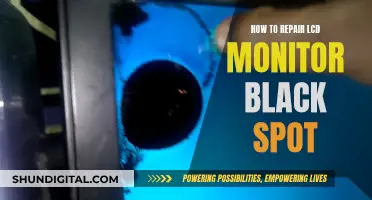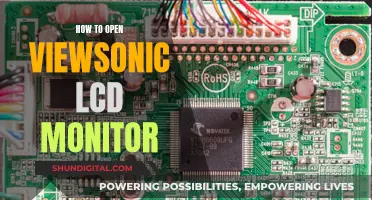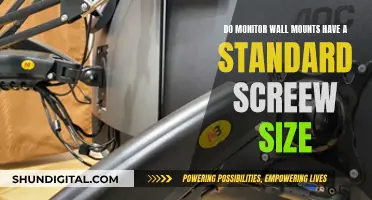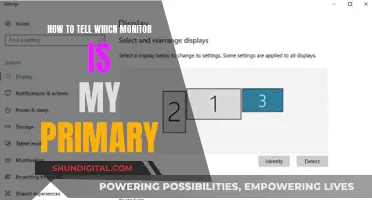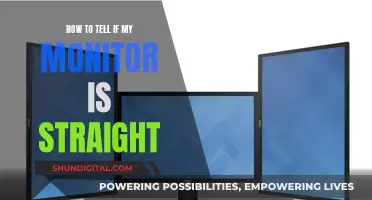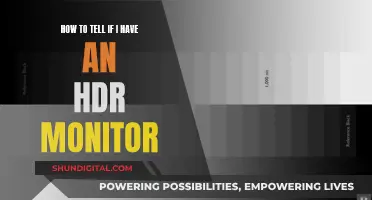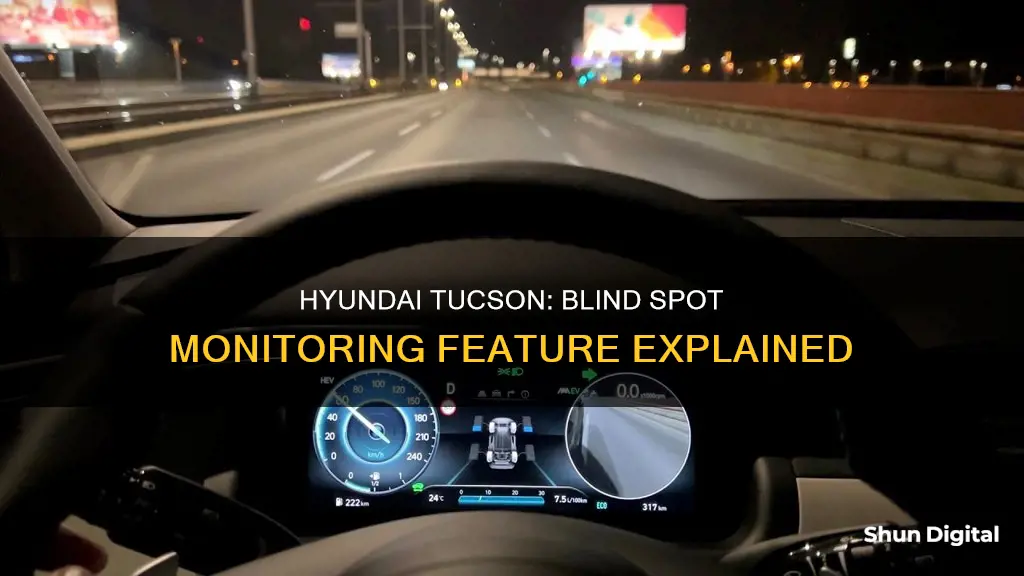
The Hyundai Tucson is a compact SUV that has been designed with safety in mind. It features advanced safety technology, including Hyundai Smart Sense, a cutting-edge driver assistance system that uses sensors, cameras and radar to detect obstacles and prevent collisions. The 2022 model comes with Blind-Spot Collision Avoidance Assist (BCA), which provides an audible and visual warning when a vehicle enters your blind spot while indicating. The all-new Tucson also features a Blind-spot View Monitor (BVM) that provides live video footage of both sides of the vehicle when changing lanes, ensuring safer lane changes.
| Characteristics | Values |
|---|---|
| Blind-spot monitoring | Blind-Spot View Monitor (BVM) |
| Type of alerts | Visual, audio, vibration, light shake in the steering wheel |
| How it works | Ultrasonic or radar sensors on the side and rear of the car |
| Additional safety features | Blind-Spot Collision-Avoidance Assist (BCA), Forward Collision-Avoidance Assist (FCA), Driver Assistance Warning (DAW), Highway Driving Assist (HDA) |
What You'll Learn

How does blind spot detection work?
Blind-spot monitoring is a safety feature that watches a driver's blind spots and alerts them if they attempt to make an unsafe lane change. While it is not a replacement for turning one's head to check, it can help keep an eye on spots that are hard to see with mirrors alone. This technology is proven to reduce injuries caused by lane-change crashes.
Blind-spot monitoring uses sensors on the outside of the car to monitor blind spots. If another car is detected in the driver's blind spot, a light will turn on to let the driver know. These lights are usually on the inside of the front doors near the mirrors or on the mirrors themselves. If the driver then turns on their turn signal, the feature will give an audible alert, such as a beep, to indicate that it is unsafe to change lanes.
The Hyundai Tucson features Blind-spot Collision-avoidance Assist (BCA), which provides both visual and audible alerts when it detects another vehicle in the driver's blind spot. The Tucson's BCA system also includes differential braking, which can be activated in the case of a collision risk. The Tucson's new Blind-spot View Monitor (BVM) goes a step further and provides actual footage from both sides of the vehicle when the driver indicates that they are changing lanes.
Locating Your LG Monitor: Finding the Serial Number
You may want to see also

Blind-Spot View Monitor (BVM)
The Hyundai Tucson is equipped with a Blind-Spot View Monitor (BVM) that provides drivers with an extra set of eyes on the road. The BVM is a live video feature that displays the vehicle's blind spots on the instrument screen, ensuring safer lane changes and manoeuvres. This advanced driver assistance technology offers a clearer picture of the road, enhancing overall safety for drivers and their families.
The BVM in the Hyundai Tucson is designed to assist drivers in effectively monitoring their blind spots. When a driver indicates a lane change, the BVM activates and shows the relevant rear view down the left or right side of the vehicle. This additional footage provides drivers with critical information that might otherwise be missed, improving their situational awareness and decision-making.
One of the key advantages of the BVM is its ability to reduce blind spots, which are areas that cannot be seen using mirrors or by turning one's head. By utilising ultrasonic or radar sensors, the BVM can detect vehicles, motorbikes, and even bicycles approaching alongside or from behind. This 180-degree coverage ensures that drivers have a comprehensive understanding of their surroundings, minimising the risk of collisions when changing lanes or merging onto a motorway.
The BVM in the Hyundai Tucson also supports drivers during overtaking manoeuvres. When returning to the left or right lane after overtaking, the system continues to provide alerts and notifications to ensure a safe lane change. The BVM works in conjunction with other safety features, such as Blind-Spot Collision-Avoidance Assist (BCA), to offer a comprehensive safety package that actively protects drivers and their families.
The advanced technology of the BVM in the Hyundai Tucson is a significant step forward in automotive safety. By providing actual footage of the vehicle's surroundings, it offers a level of confidence and assurance that traditional mirrors cannot match. With the BVM, drivers can make more informed decisions, navigate busy city streets, and cruise on motorways with increased visibility and a reduced risk of accidents.
LCD Monitors: Understanding Camera Display Technology
You may want to see also

Blind-Spot Collision-Avoidance Assist (BCA)
Blind spots are a common issue for drivers, obscuring parts of the road when changing lanes or turning. This is where blind spot detection systems come in. The 2022 Hyundai Tucson is equipped with Blind-Spot Collision-Avoidance Assist (BCA), an advanced safety feature that helps address this issue.
The BCA system in the Hyundai Tucson uses rear corner radar to detect vehicles in the driver's blind spot. When a vehicle is detected, BCA provides both visual and audible alerts to the driver, ensuring they are aware of the potential hazard. These alerts appear on the exterior mirrors, allowing drivers to make informed decisions before changing lanes or merging.
Enhanced Safety
The Tucson's BCA system offers an additional layer of protection beyond simply alerting the driver. In the event that a driver overlooks the visual alerts, BCA provides an extra safeguard by activating differential braking and issuing an audible and visual warning in the instrument cluster to prevent a potential collision. This comprehensive approach ensures the safety of both the driver and their passengers.
Peace of Mind for Drivers
The inclusion of BCA in the Hyundai Tucson provides drivers with added peace of mind. By assisting with collision avoidance and offering alerts, BCA helps reduce the risk of accidents and enhances overall safety on the road. This feature is especially valuable for drivers with families, as it provides reassurance that their loved ones are protected during their journeys.
A Step Towards Safer Driving
The implementation of BCA in the Hyundai Tucson is a significant step forward in automotive safety. By addressing blind spots, a common challenge for drivers, BCA contributes to a more comprehensive safety package. This advanced driver assistance system, combined with other features like the Blind-spot View Monitor (BVM), showcases Hyundai's commitment to innovation and the well-being of its customers.
Choosing the Right Monitor: Size Considerations
You may want to see also

Forward Collision-Avoidance Assist (FCA)
The Hyundai Tucson is equipped with Forward Collision-Avoidance Assist (FCA), an advanced system designed to prevent or reduce the effects of a forward collision. This system uses a forward-facing, high-resolution camera to scan the road and alert drivers of potential collisions. If the vehicle detects a pedestrian, cyclist, or stopped vehicle, it will warn the driver and, if necessary, apply the brakes automatically. This technology is designed to work at both low and high speeds, providing added protection during everyday driving.
FCA can be customised to suit your preferences and driving conditions. Users can select from 'Early', 'Normal', and 'Late' warning settings. 'Early' is recommended for high-speed travel, while 'Late' is better suited for city driving. The system can be activated by pressing the Mode button on the right side of the steering wheel and navigating to the Driver Assistance settings.
The FCA system is part of Hyundai Smart Sense, a cutting-edge active driver assistance system package offered in the Hyundai Tucson. This package includes sensors, cameras, and radar technology to detect obstacles and prevent collisions, enhancing safety for drivers and their families.
The 2022 Hyundai Tucson, in particular, has received recognition for its bold look, spacious interior, and advanced safety features, including Forward Collision-Avoidance Assist with Pedestrian Detection (FCA-Ped). This feature not only warns drivers of potential collisions but also automatically applies emergency braking if necessary.
However, it is important to note that the FCA system relies on clear sensors to function optimally. Some users have reported issues with the system being disabled due to blocked sensors, which can occur from leaves, rain, snow, or other debris. Overall, the Forward Collision-Avoidance Assist (FCA) in the Hyundai Tucson provides added peace of mind and safety for drivers and their families.
Monitoring Calories and Portions: A Health Priority
You may want to see also

Driver Assistance Warning (DAW)
The Hyundai Tucson is equipped with a Driver Assistance Warning (DAW) system, a driver protection feature that helps prevent potential accidents by monitoring the driver's patterns. When the system detects inattentive driving patterns, it alerts the driver through a sound and a message displayed on the instrument panel.
The DAW system analyses various vehicle signals, such as steering angle, steering torque, the vehicle's position in the lane, and driving time, to determine if the driver is distracted or fatigued. This advanced technology ensures that even if a driver's focus is momentarily compromised, the Tucson can intervene to prevent potential accidents.
When the DAW system detects inattentive driving patterns, it provides both an audible alert and a visual warning on the instrument display panel. This dual-warning system helps ensure that the driver is alerted in a way that effectively grabs their attention. The system is designed to monitor the driver's patterns and intervene when necessary to enhance safety on the road.
The DAW system is just one of the many advanced driver-assistance features offered by the Hyundai Tucson. Together with other safety features, such as Blind-Spot Collision-Avoidance Assist (BCA) and Forward Collision-Avoidance Assist (FCA), the Tucson provides a comprehensive safety package that offers enhanced protection and peace of mind for drivers and their families.
With the increasing demand for advanced driver-assistance systems and the growing trend of automated features in modern cars, the Hyundai Tucson is designed to meet the needs of safety-conscious drivers and provide an extra set of eyes on the road.
Monitoring Wi-Fi Usage on iPhone: A Step-by-Step Guide
You may want to see also
Frequently asked questions
Yes, the Hyundai Tucson has Blind-spot Collision-avoidance Assist (BCA) to support drivers before changing lanes or merging.
The system uses ultrasonic or radar sensors on the side and rear of the car to detect vehicles approaching alongside or behind you. If you are indicating to change lanes, the system will warn you through a flashing light on your wing mirror, a warning sound, a vibration or light shake in the steering wheel, or a visual warning in the instrument cluster.
Blind-spot monitoring gives drivers more confidence when driving and changing lanes by providing an extra set of eyes where drivers can't see. This helps to keep the driver, their passengers, and other road users safe.
The Hyundai Tucson has a comprehensive safety package, including Forward Collision-Avoidance Assist, Smart Cruise Control, Highway Driving Assist, and more.


